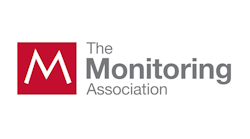Cloud-Hosted Central Stations: The New Alternative
This article originally appeared in the October 2022 issue of Security Business magazine. When sharing, don’t forget to mention Security Business magazine on LinkedIn and @SecBusinessMag on Twitter.
Central monitoring has long been the backbone of any effective fire or security system; however, providing central station services has been a challenge for most residential and commercial integrators. Central monitoring requires a technically advanced facility that features a redundant technology infrastructure as servers, power and communications systems, as well as modern IT capabilities. As those systems have evolved both in capabilities and costs, many integrators who provide in-house central monitoring services have been left struggling to catch up.
In much the same way that it has impacted the security service provider industry, cloud computing has enabled the rise of the Central Station as a Service (CSaaS) – thanks to the recently enacted UL 827A standard. UL 827A permits existing UL-listed central monitoring providers who qualify to add the 827A listing to deliver hosting to other central stations.
While much industry coverage has been given to UL 827A from the third-party and wholesale central station provider perspective, for security integrators with an internal central station, this could be a game-changer.
“The availability of hosted central station services will be a key factor in the future growth of the alarm monitoring industry,” UL writes in a whitepaper on the benefits of UL 827A. “Hosted services can reduce the investment required for the deployment of central stations while providing CSSPs (central station service providers) with greater strategic and economic flexibility in meeting the current and future needs of their customers.”
Advantages of Hosting
According to long-time central monitoring and alarm industry expert and consultant Peter Giacalone, moving an integrator’s internal central station to a hybrid or fully hosted offering in partnership with a UL 827A-certified provider enables the integrator to:
- Focus on service offerings rather than technology challenges;
- Reduce operational expenses;
- Reduce capital expenditures;
- Adhere to requirements for proper diverse telecom and network connectivity; and
- Satisfy UL MEW mandates for redundancy.
An essential benefit of a hosting service is the ability to relieve some of the burden from the central station – in the form of reduced need for IT experts on staff or the burden of paying for and maintaining routine hardware, as well as software licensing and upgrades. Outsourcing enables the central station to focus its resources on service delivery to customers.
In the end, partnering with a third party means that integrators would no longer need to update monitoring technology and infrastructure. They would also be able to increase the number of value-added services to offer more options to customers – and thus open more potential RMR. Those value-added hybrid or hosted services, according to Giacalone, are vast. They include:
- Central station receiver hosting & management
- Central station automation hosting & management
- PBX telephone hosting & management
- Telephony services management
- Human resources in planned or emergency situations
“It appears that as time passes, more self-monitored integrators will migrate to a hosted or hybrid structure,” Giacalone predicts.
Paul Rothman is Editor-in-Chief of Security Business magazine, a printed partner publication of SecurityInfoWatch.com. Access the current issue, archives and subscribe at www.securitybusinessmag.com.




